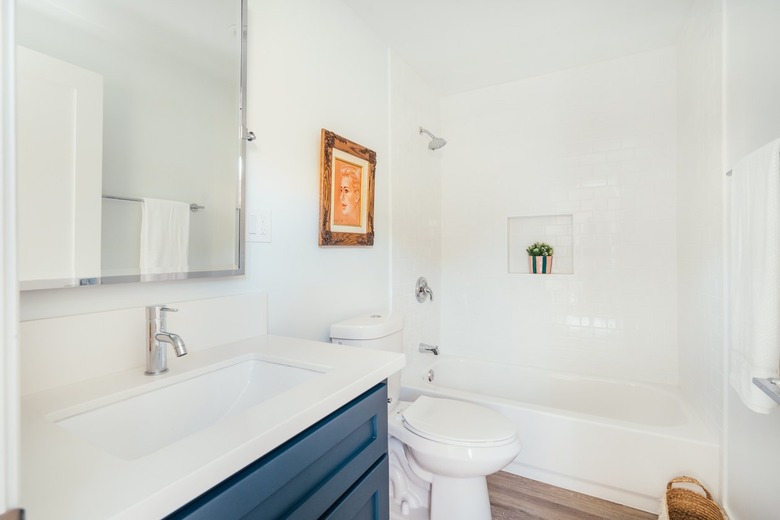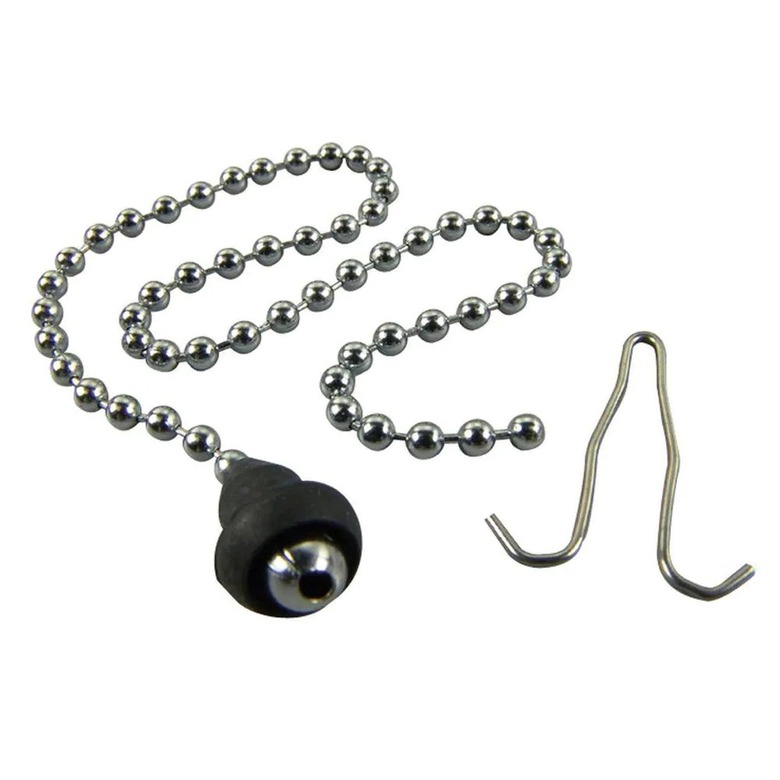How To Install A Toilet Y Hook
We may receive a commission on purchases made from links.
A conventional toilet flush mechanism consists of the flush valve, which is a 1 1/2- to 2-inch water inlet in the bottom of the tank covered by a rubber or plastic flapper, a trip lever connected to the flush handle and a chain that connects the trip lever to the flapper. The chain has to be adjustable to allow the flapper to synch with the trip lever, so the connection is made by a Y hook that clamps onto the chain and hooks into the end of the trip lever. You can correct many flushing problems by adjusting the position of this hook on the chain to make it shorter or longer.
Adjusting the Y Hook
Adjusting the Y Hook
As long as your toilet isn't a dual flush or pressure assist model, you'll see the chain connecting the flapper or canister to the trip lever when you open the lid. The chain consists of a series of stainless steel balls linked to each other by thin, short lengths of metal, and the Y hook is designed to clamp over one of the balls and onto the links on either side of it. Although the clamp is tight, it relies only on the spring tension of the metal, so you can unclamp it fairly easily without tools.
You can make this adjustment without shutting off the water, but it's better to do so anyway to limit water waste. Unhook the Y hook from the trip lever, grasp it in one hand, fold the chain back on itself, hold the fold in the other hand and push the Y hook against the chain to force off the clamp. Once the hook is off, you can move it to another link to shorten or lengthen the chain as needed.
To reclamp it, hold the clamp against the chain and pull down on the hook to force the chain into the clamp.
Long and Short Y Hooks
Long and Short Y Hooks
You need to adjust the Y hook when the chain is too short or too long, and you can tell by the way the toilet flushes. If the flush is very short and allows for so little water that you have to flush again, the chain is probably too long and is pulling up the flapper only a fraction of the distance it needs to go to fully open the valve. On the other hand, if the chain is too short, the flapper won't seat fully on the flush valve, the valve will leak, and the toilet will run.
A chain adjustment is just one of the remedies for a running toilet, but it's the easiest, so it's the first one you should try. Adjust the Y hook to lengthen the chain by two or three links, and if the running stops, you're done.
Other Cures for Running Toilets
Other Cures for Running Toilets
If the running continues, that might be a sign that the flapper is worn out and needs to be replaced or it could mean the float is set too high. Readjust the float and replace the flapper, if necessary, using an inexpensive universal flapper that works on most toilets. Check out PlumbingSupply.com's breakdown of the toilet flush and fill mechanisms to troubleshoot any other possible problems.

